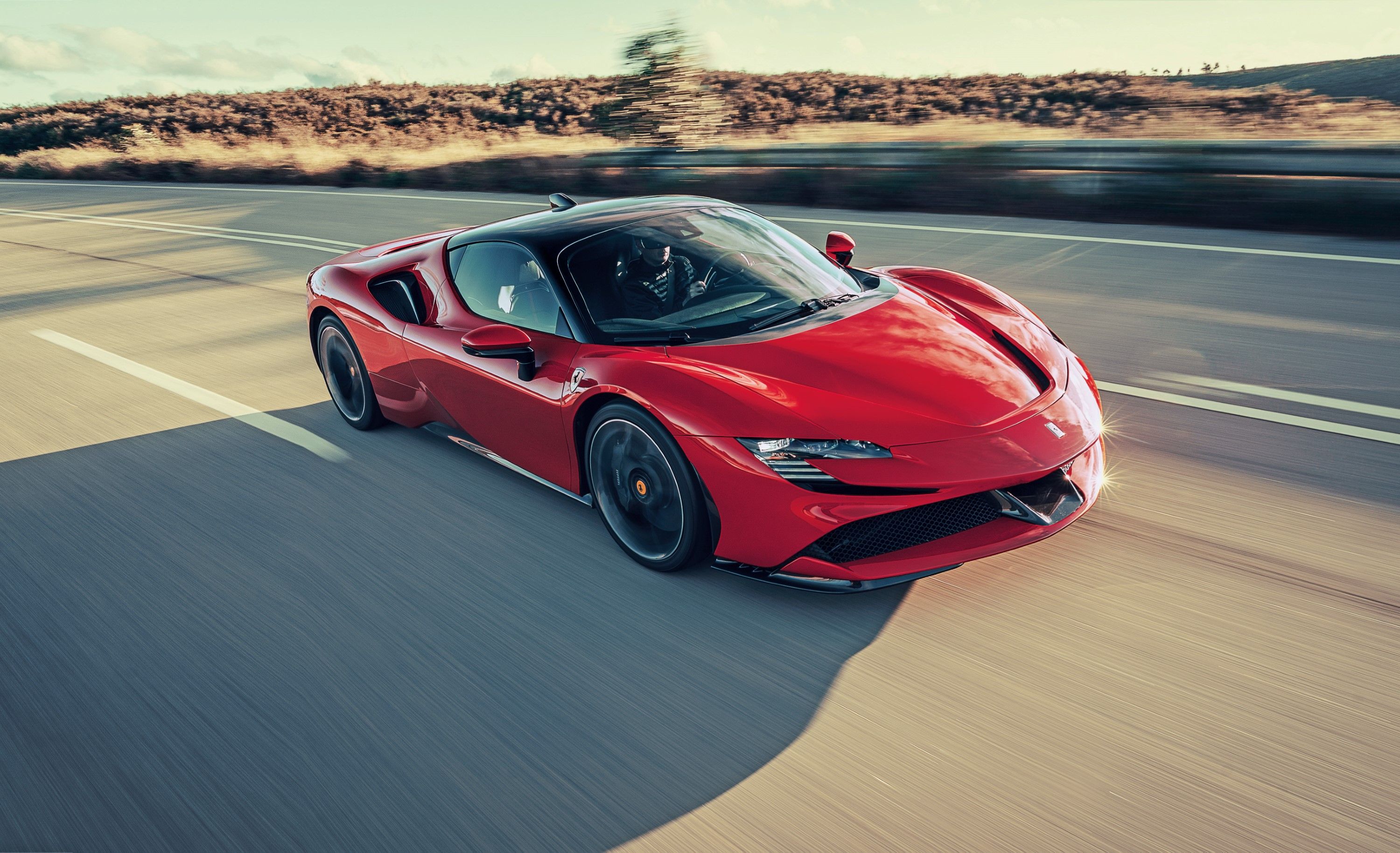
Mercedes and Ferrari are fierce rivals on the Formula 1 circuit, but outside, the two brands don't often intersect. Mercedes sells a handful of cars that compete directly with Ferrari models. Ferrari is too busy producing hypercars (and losing the latest F1 race) to compete with Mercedes on volume. Despite the lack of similarity between the two brands, each has realized the benefits of new axial flux motors for their hybrids and EVs, like the Mercedes-Benz EQS.
We've known about the use of these motors by both brands for some time. Ferrari currently uses one in the SF90 Stradale. Mercedes also uses them in a handful of its cars. The reason is simple. They're lighter and more powerful than the more common radial motor.
"The power-to-weight ratio is really a record number, and much better than conventional motors," Markus Schaefer, Mercedes's Chief Technology Officer, said to Automotive News. Here, Schaefer is talking about Merc's upcoming AMG-specific EV platform. "It will make use of the small size of the motor," Schaefer concluded. The benefits of an axial motor are evident once you have a loose understanding of how these motors work.
As you push the "gas" pedal in your EV or hybrid, anywhere from hundreds to thousands of amps (the base unit by which electrical currents are measured) are fed through copper coils. Then, the coils are energized, turning into large electromagnets that both push and pull, like the ends of a magnet do. The now magnetic force spins a rotor inside a stator (stationary part in a machine in or about which a rotor revolves) that turns your wheels. That's a very simplified explanation, but for now, it's all we need.
When you're working with an axial motor, disc-shaped rotors spin alongside a centrally-located stator. That means the flow of the current (called the flux) travels axially through the assembly, rather than radially like in our example above. So, since the axial motor makes torque across a larger diameter, you need less material to make the motor, meaning it's smaller. Koenigsegg exercises a very similar principle in its backpack-sized motor.
Let's look at a more practical example. Yasa makes the electric motors for the SF90 and 296 GTB. By using an axial flux motor, only a few pounds of iron are needed for the motor's stators, which reduces mass by nearly 85%. Coincidentally, the motors, developed by Tim Woolmer, eventually found their way into the Koenigsegg Regera a few years back.
Now, Mercedes owns Yasa, and will use the brand's motors in its AMG models starting in 2025. Perhaps Merc and Ferrari won't be competing in 2025, but partners instead. Regardless, the benefits of using these motors for both companies will be the same. Woolmer says that these new motors could eliminate the need for the traditional "skateboard" EV layout. That means less weight, more cargo capacity, and more efficiency.
However, axial motors cannot spin as quickly as radial ones, meaning that your SF90's top speed will be affected if it solely uses axial flux motors. So, Ferrari used two traditional motors and one axial one on the SF90. "It's just a matter of what kind of driving experience you want to design for your customers with a specific engine," said Davide Ferrara, Ferrari's electric motors manager. "Different voices make sweet notes."
